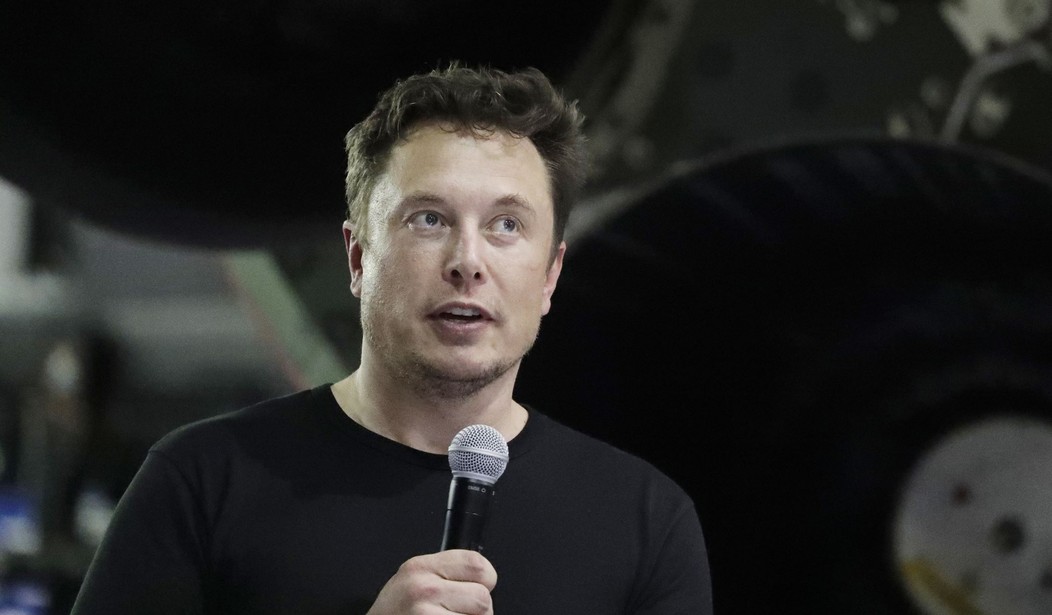As our president likes to say … not a joke. After the board of directors adopted a poison-pill strategy to dilute the value of its shares, some observers thought that Musk might back off after having made a point about Twitter’s bad management.
Instead, Musk announced that he has locked in enough financing to perhaps even sweeten his previous offer a bit:
Elon Musk says he has secured $46.5 billion in financing to acquire Twitter ― much of it backed by his Tesla shares ― but questions remain about how he will structure the deal and how the company’s board will respond.
In a Securities and Exchange Commission filing on Thursday, the Tesla CEO listed three sources for the cash. The first two would be loans from investment bank Morgan Stanley, worth $13 billion and $12.5 billion respectively. The third source is described as an equity commitment of $21 billion from Musk himself.
Last week, he made a surprise proposal to purchase the social media platform for $54.20 per share. Twitter quickly responded by adopting a so-called “poison pill” strategy to make the company’s stock less desirable and more difficult for Musk to acquire.
The previous estimate of the buyout at that share price was $43 billion. It sounds as though Musk is locking in enough financing to incrementally nudge that price up a bit to force the board to answer for its actions with shareholders. (It also forces potential competing suitors to think about the resources Musk can still bring to bear.) As Musk pointed out earlier, the board itself owns very little of Twitter — and the actual shareholders might see a slightly sweetened offer from Musk as their best value.
Why would lenders gravitate toward a leveraged buyout* of Twitter when Musk’s ostensible direction would likely undermine at least some advertiser interest in the short term? One reason is that Musk’s obviously good for the value of the loans. He might not have $26 billion liquid at the moment, but his net worth of around $300 billion certainly makes Musk a safe risk at these levels. Plus, as John noted last night, Tesla’s performing well now — generating record revenues and profits. Having Tesla stock as collateral makes it look like the kind of deal that lenders would stampede over each other to get participation.
Assuming Musk doesn’t start tweeting about Tesla stock again, that is. I wonder if Morgan Stanley negotiated that into the lending agreement. It might be the only time they’ll have this kind of leverage on him.
The Financial Times also notes that the lending agreements would tie up 85% of Musk’s current stake in Tesla. Isn’t that risky for Musk in terms of his control of his core company? Not as much as you’d think, because Musk is likely to own a lot more of Tesla very soon, thanks to a bonus scheme that is about to mature:
The margin loan to fund a Twitter bid requires a pledge of nearly 59m Tesla shares, or about 85 per cent of Musk’s total stake. His remaining unpledged stock is worth about $25bn at current prices so if sold, and allowing for an overhang discount, there would be just enough to cover the cash component of the offer. It’s a big ask.
But such calculations ignore a big event looming in the Muskonomy: the final payout from Tesla’s 2018 bonus scheme. Musk’s last awards will unlock shortly, assuming board approval, and will carry a five-year selling lockup.
Each of the three tranches due Musk give him the right to buy 8.4m Tesla shares at $70, a more than 99 per cent discount to the prevailing market level. So, based on a $1,061 share price at pixel time, Musk could buy Tesla stock worth $25.4bn for about $588m. Factor in those shares and the margin loan financing looks a bit less onerous.
So yes, this is serious, and not as risky as it might appear. Twitter is now sitting up and taking notice again:
The documents filed with the Securities and Exchange Commission say San Francisco-based Twitter Inc. has not responded to Musk’s proposal.
Twitter said in a statement Thursday that it has received Musk’s updated proposal and its “new information on potential financing.”
The company said its board is “committed to conducting a careful, comprehensive and deliberate review to determine the course of action that it believes is in the best interest of the company and all Twitter stockholders.”
The board has two big problems. First, Musk’s obviously serious about his ambition to own Twitter outright, or at least to own it jointly with MorganStanley for a while. Second, they don’t control enough of the stock to blow Musk off. They have to hope that their institutional investors will refuse to sell, but adopting poison-pill initiatives likely made those investors a lot less happy with current management. The poison pill is still a deterrent while it lasts, but it might force those investors to demand a change in the board at some point to reverse that decision, especially if they don’t see any better potential value for that stock than Musk will offer now. Birds in the hand are worth two in the bush, and it’s tough to see how Twitter stock will rise past the sales point at the current value of money in a highly inflationary environment.
None of this speaks to what kind of owner Musk would make, or what kind of owner he’s been in his other enterprises. At this level, most shareholders in Twitter won’t worry much about those questions either. Money talks here, and Musk has just put it where his mouth is. The only question is whether it’s enough to pay for the inherent value shareholders see in the platform.
Update *: I use the term “leveraged buyout” here in perhaps a looser sense than I should. Typically, LBOs are undertaken by current management in publicly traded companies to take them private. This isn’t quite the same thing, since Musk isn’t in current management or the board — although he is the single largest stockholder in Twitter. It still serves as a fairly descriptive term for what Musk wants to do here and his use of outside financing to achieve it.
For a fun, snarky look at one of the most notorious LBOs of the 1980s, watch the 1993 James Garner film Barbarians At The Gate, which I believe was made for HBO.







Join the conversation as a VIP Member